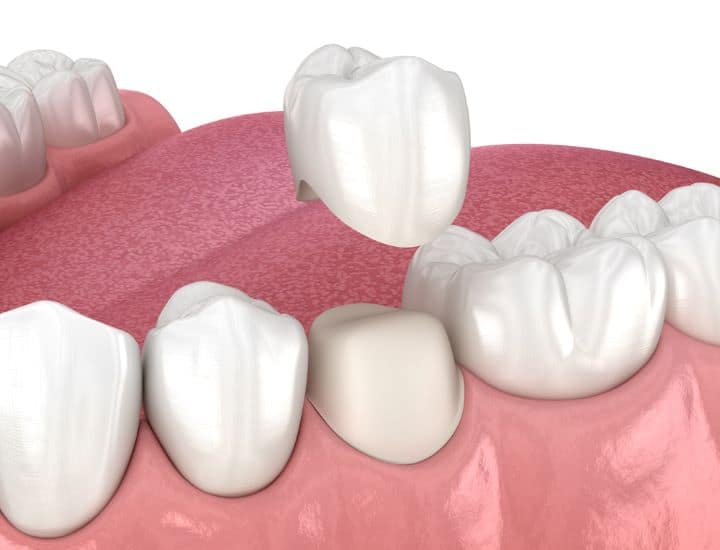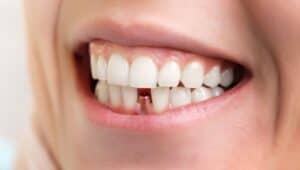Deep cleaning is also called scaling and root planning and it involves removing plaque from under the gumline.

However, you might not be a candidate for it. You need to see your dentist to see whether you need a deep or regular cleaning.
Patients with swollen gums and pocket depth of more than 5mm (~0.2 inches) around many of the teeth accompanied by bone loss are candidates for deep cleaning.
For the procedure, you’re injected with local anesthesia to go deep in the gum tissues. Usually, the cleaning happens in two appointments, considering the application of an anesthetic agent.
Dental Cleanings: Regular Cleaning Vs. Middle Cleaning Vs. Deep Cleaning
Regular cleaning is preventative maintenance, also called prophylaxis or, in short, oral prophy. The prophylaxis is explained as a treatment taken to prevent a disease from happening. It’s basically done even before a disease starts in your oral cavity.
It’s when your dentist or dental hygienist removes plaque, tartar, and bacteria from your teeth surfaces — a standard cleaning recommended every six months. These cleanings occur in a healthy mouth, with firm pink gums and healthy normal pockets with a depth of 3mm or less.
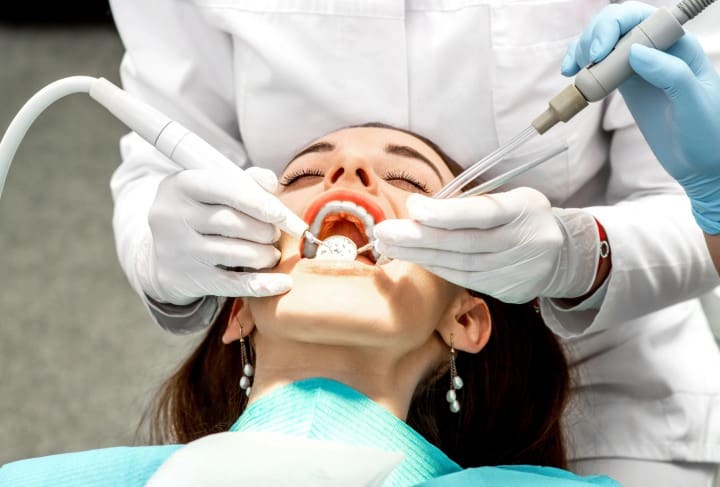
However, if your overall gum health is okay, but you have a few teeth with pockets greater than 4mm and gum inflammation, you must get a middle cleaning done. This is called tooth scaling in medical terminology. It cleanses the mess below your gumline but doesn’t go too far beneath the gums. With proper home care brushing and flossing routine, your gums can grow back to a healthy state within a few months.
If things get worse and you’ve got many teeth with greater than 4mm pockets, gum inflammation, and even bone loss, you are the candidate for deep cleaning. This is also called scaling and root planning. However, it’s important to note that deep cleaning is not for individuals with healthy gums, and it’s no better than regular cleanings.
You might seek re-care oral prophies every three months, depending on your oral health condition, after a scaling and root planing have been carried out in your mouth.
How Does The Dentist Determine If I Need a Dental Deep Dental Cleaning?
When you see your dentist or dental hygienist for your gum health, they’d probably do three things:
- Clinical Examination
- Periodontal Charting
- Radiographs
Clinical Examination
Your dentist will look for plaque or calculus on your teeth and gums and check for signs of inflammation.
Periodontal Charting
Next, he’ll get a periodontal probe to check for the periodontal pockets.
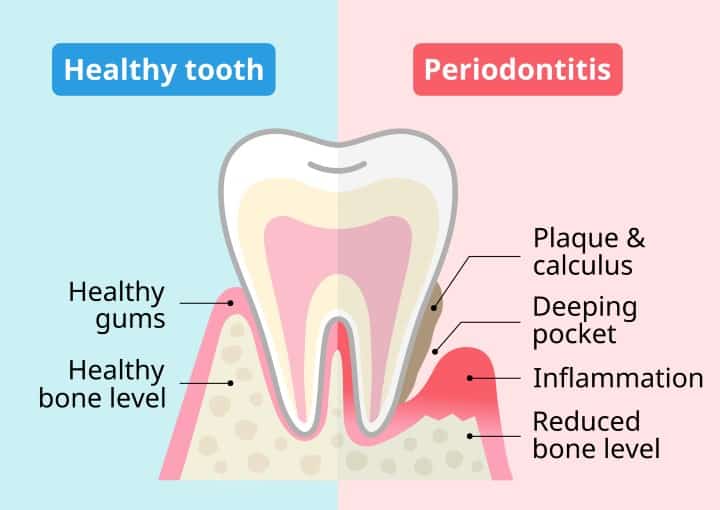
It’s a kind of ruler with markings in millimeters. Our naturally healthy teeth and gums have pockets 1 to 3mm deep. However, if the pockets get beyond 4mm, that means there’s something fishy. The pocket depth must be accompanying a bone loss, too.
Radiograph
An X-ray must be taken to see if some sort of bone loss accompanies inflammation. Bone loss is necessary to determine whether deep dental cleaning is needed.
Do I Need a Deep Dental Cleaning?
Here’s the checklist to see whether you’re the right candidate for deep dental cleanings:
- Swollen and bleeding gums
- Periodontal pockets of more than 4mm in more than six teeth.
- Generalized bone loss
- Poor brushing and flossing habits.
Everything You Need To Know Before Your Deep Cleaning Appointment
Deep cleanings aren’t that scary and painful. If you’re recommended a deep cleaning by your dental provider, you might get a part of your treatment done on the same day of the diagnosis. However, in some cases, you’ll be appointed to visit back later.
On the day of your appointment, you’ll be informed that the procedure will be carried out in two appointments. One side of your mouth will be cleaned on day 1, while the other side of your mouth will need another visit. Cleaning removes the tartar, plaque, or calculus on and around your gums and teeth.
On day 1, you’ll be asked for your brief medical history before you receive a numbing injection on either the right or the left side of your mouth. You’re supposed to eat your meal before the dental procedure because either side will stay numb for an hour or two, depending on the type of local anesthetic used. Although you can eat after your appointment, we don’t want you to bite your cheek and tongue because you won’t feel any sensation for an hour or so on the numbed side.
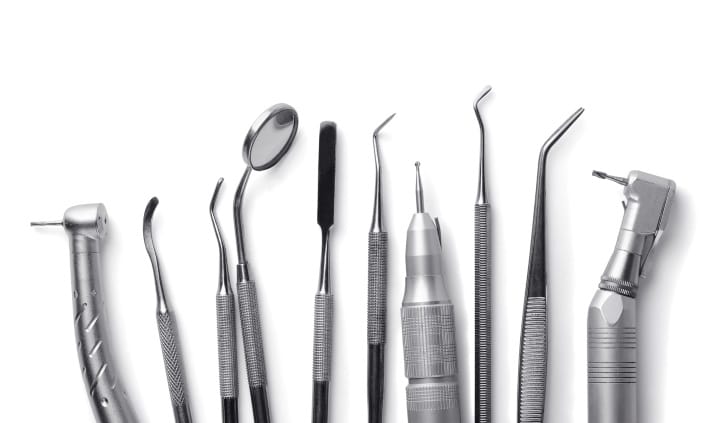
It might take 45 minutes or one hour on each day of your appointment, depending on the amount of buildup on your teeth. Once you’re thoroughly numbed, your dentist will use an ultrasonic dental scaler along the surface of your teeth. You won’t feel any pain, but you might feel some sensations on your tooth surface. It’s more like routine dental cleaning going deeper into your gums.
Cleaning can be uncomfortable, and you can inform your dental team if you feel such. You must expect a lot of water from the scaler tip that would be sucked with the help of suction. Don’t worry a dental assistant will be assisting the dentist to suck the water out.
During a deep cleaning, your dentist may switch between a hand-held dental scaler and an ultrasonic tip. You may also irrigate your gums with some antiseptic agents to remove the bad bacteria efficiently. Your dentist often puts some antibiotics in your deep pockets to eliminate the progressive disease. To treat the other side, you’ll be appointed by your friendly dental team some days later.
Before you leave, you’ll be provided with some post-treatment instructions.
Post-Treatment Instructions
You might face some amount of soreness following your deep dental cleaning. To get rid of it, you’re advised to follow the post-treatment instructions provided by your dental team. You must follow these instructions for 7-10 days before you switch back to your regular oral care routine.
Warm Salt Water Rinses Every Two Hourly
Warm salt water rinses are very effective in fighting the inflammation in your mouth. The deep scaler irritated the gums, making them appear swollen and red. Saline rinses every two hours can help relieve the problem very quickly.
Put a teaspoon of salt in a glass of warm water and rinse your mouth until you’ve made it through this entire glass. You’ll feel very comfortable after getting through it.
Observe Proper Oral Hygiene
Once you’re professionally done with your deep cleaning, it’s your turn to take care of your mouth.

Brush properly twice a day and floss daily. You may use an electric toothbrush or a super floss to help you with the purpose. It is recommended to see your dentist regularly every three months to check whether your gums have grown back or not. You’d probably find your mistake on your dental visits if you don’t find any significant improvement in your gum health.
Advantages of Deep Cleaning
- Promotes oral health
- Stop the progression of gum disease like periodontitis
- Help you get rid of soreness and bad breath
- Promotes the regrowth of gum tissue
Disadvantages of Deep Cleaning
- Generalized sensitivity in the mouth
- Exposure of roots of the teeth
- This may cause the gap between your teeth to be evident.
What is The Cost of Deep Cleaning?
Dental deep cleanings cost somewhere around $150 to $300 without dental insurance. If that’s too expensive for you, you may get yourself dental insurance, or you may contact some charity-based organizations doing this treatment at a reduced cost at a few dental schools.
How Long Does It Take For Gums To Heal After Deep Cleaning?
Usually, the swelling tends to stay for a week or two. However, you’ll see significant improvement in gum health within a month.

